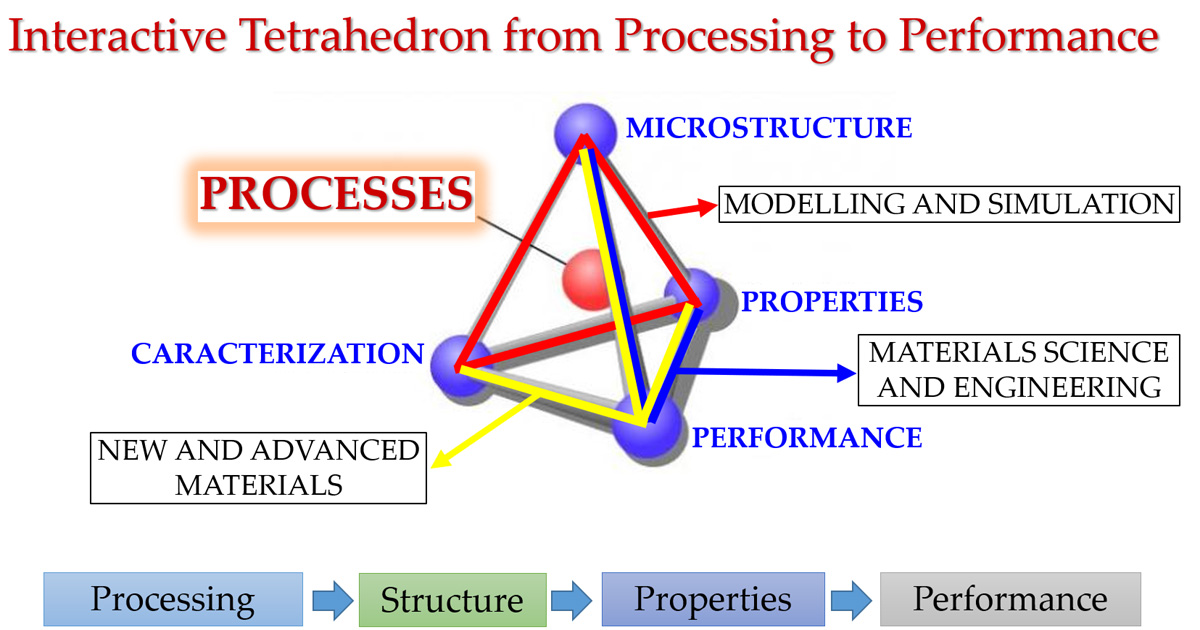Microstructure Properties and Characterization of Metallic Material
A special issue of Processes (ISSN 2227-9717). This special issue belongs to the section "Materials Processes".
Deadline for manuscript submissions: 31 January 2026 | Viewed by 4163

Special Issue Editors
Interests: innovative and advanced materials; heat treatments; manufacturing processes; processing-characterization-performance relation; modeling and simulation
Special Issues, Collections and Topics in MDPI journals
Special Issue Information
Dear Colleagues,
The microstructure of metallic materials is fundamental in determining their mechanical, physical, and chemical properties, which are critical to the performance and durability of these materials in demanding applications. Recent advancements in alloy design, processing methods, and surface engineering have paved the way for significant improvements in metallic materials’ microstructural properties. Understanding how heat treatment, phase transformations, and defect evolution influence the microstructure of metallic alloys has become increasingly important in optimizing their performance for industries like aerospace, automotive, energy, and biomedical engineering.
This Special Issue on “Microstructure Properties and Characterization of Metallic Material” invites high-quality research contributions focusing on the relationship between microstructural features and the resulting properties of metallic materials. Topics include the development of novel alloys, advanced characterization techniques, and studies on how processing techniques such as casting, additive manufacturing, and thermomechanical treatments affect microstructure. We are particularly interested in research that explores microstructure evolution under extreme operational conditions, such as high temperatures, stresses, or corrosive environments. This Special Issue aims to advance the understanding of how to control and manipulate the microstructure of metallic materials to enhance their mechanical properties and reliability in various industrial applications.
Dr. Edwan Anderson Ariza Echeverri
Dr. Crispulo Enrique Deluque Toro
Guest Editors
Manuscript Submission Information
Manuscripts should be submitted online at www.mdpi.com by registering and logging in to this website. Once you are registered, click here to go to the submission form. Manuscripts can be submitted until the deadline. All submissions that pass pre-check are peer-reviewed. Accepted papers will be published continuously in the journal (as soon as accepted) and will be listed together on the special issue website. Research articles, review articles as well as short communications are invited. For planned papers, a title and short abstract (about 250 words) can be sent to the Editorial Office for assessment.
Submitted manuscripts should not have been published previously, nor be under consideration for publication elsewhere (except conference proceedings papers). All manuscripts are thoroughly refereed through a single-blind peer-review process. A guide for authors and other relevant information for submission of manuscripts is available on the Instructions for Authors page. Processes is an international peer-reviewed open access semimonthly journal published by MDPI.
Please visit the Instructions for Authors page before submitting a manuscript. The Article Processing Charge (APC) for publication in this open access journal is 2400 CHF (Swiss Francs). Submitted papers should be well formatted and use good English. Authors may use MDPI's English editing service prior to publication or during author revisions.
Keywords
- microstructure evolution
- alloy design
- mechanical properties
- phase transformations
- heat treatment
- surface engineering
- microstructural characterization
- advanced materials
- modelling
- simulation
Benefits of Publishing in a Special Issue
- Ease of navigation: Grouping papers by topic helps scholars navigate broad scope journals more efficiently.
- Greater discoverability: Special Issues support the reach and impact of scientific research. Articles in Special Issues are more discoverable and cited more frequently.
- Expansion of research network: Special Issues facilitate connections among authors, fostering scientific collaborations.
- External promotion: Articles in Special Issues are often promoted through the journal's social media, increasing their visibility.
- Reprint: MDPI Books provides the opportunity to republish successful Special Issues in book format, both online and in print.
Further information on MDPI's Special Issue policies can be found here.






